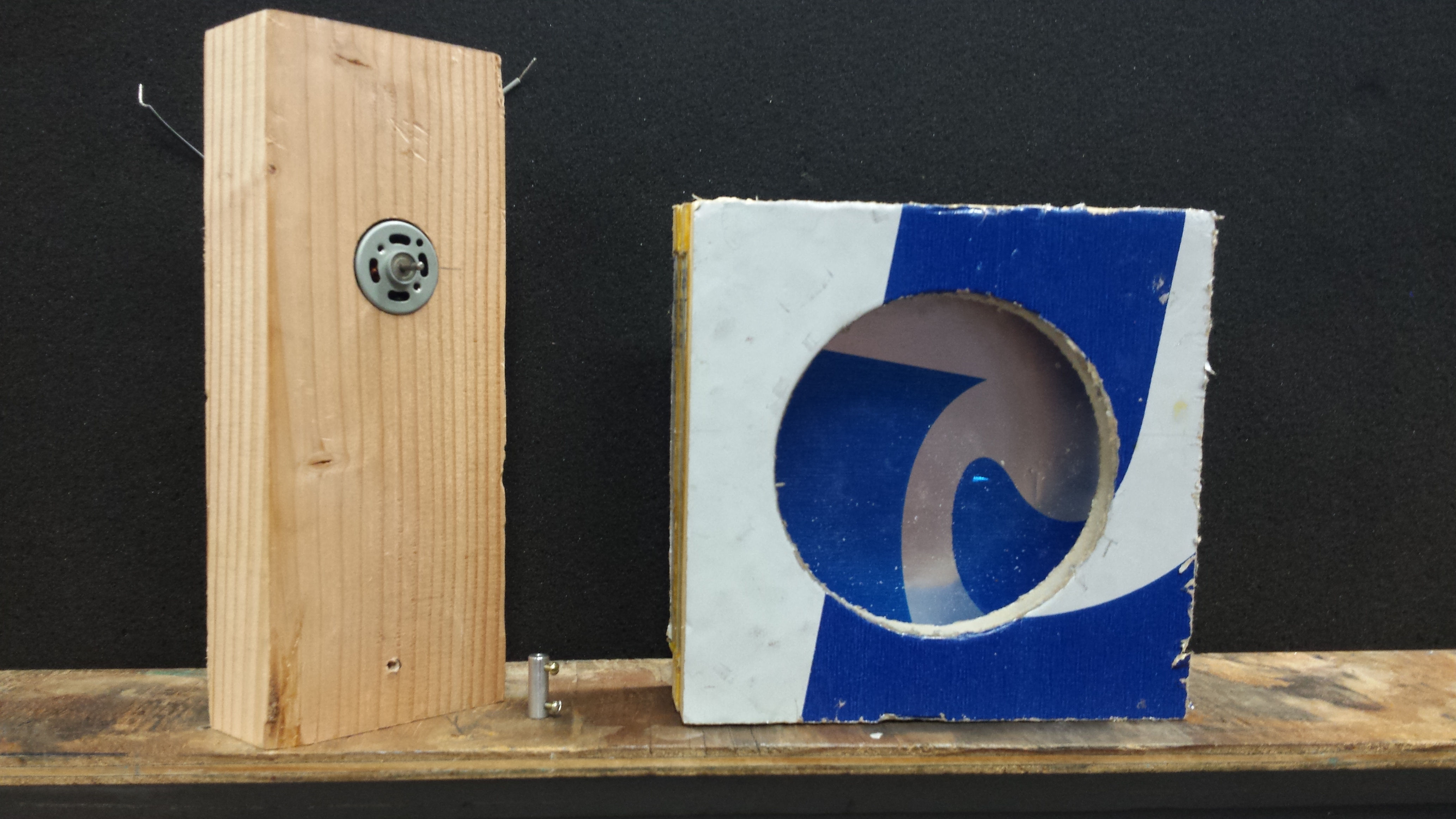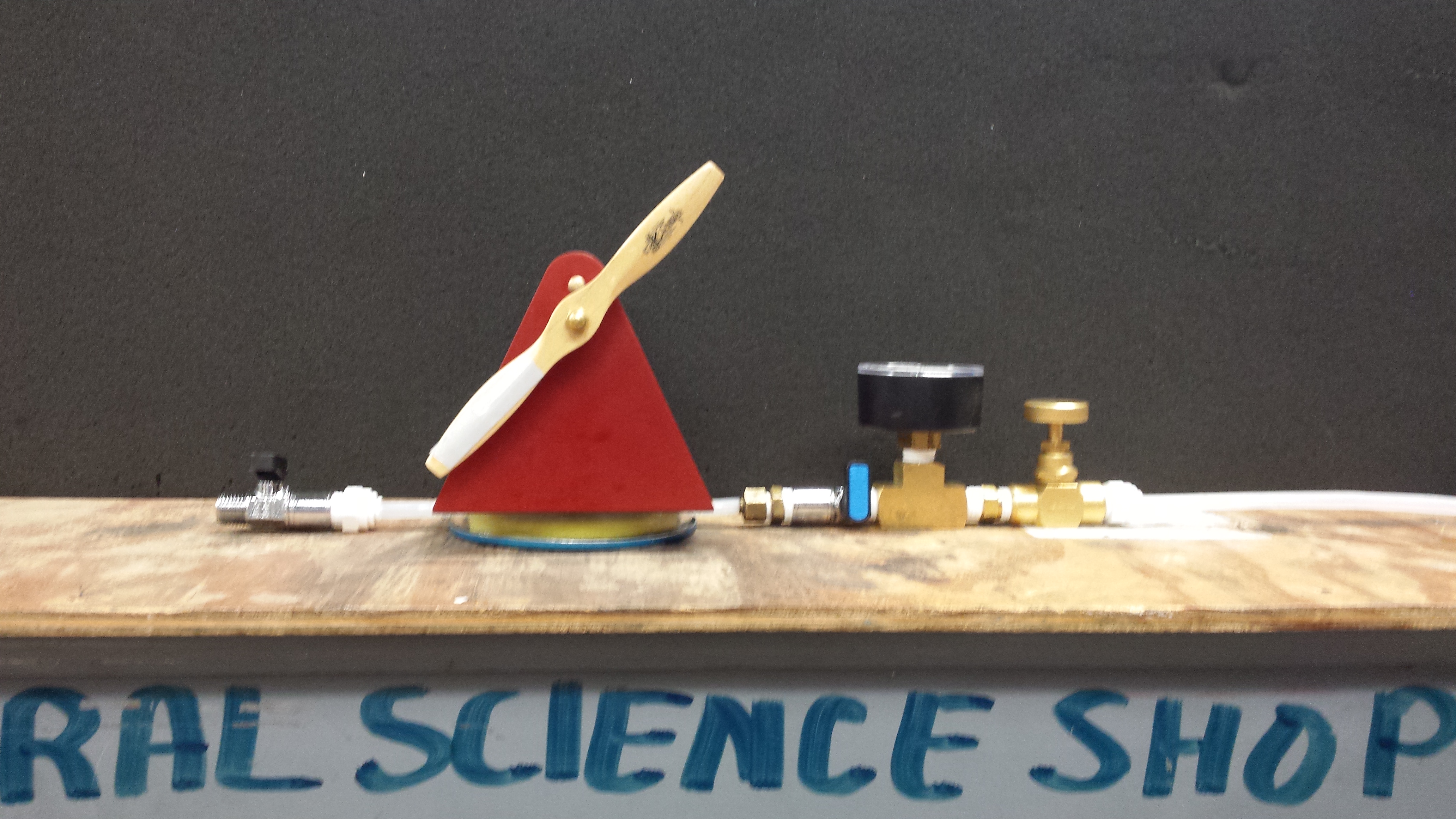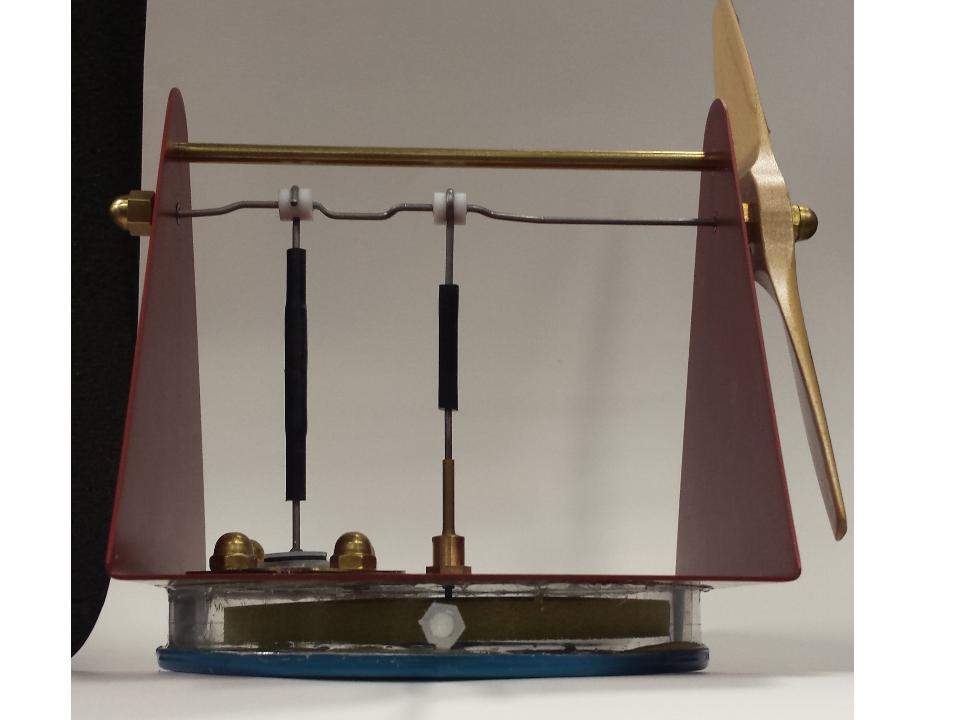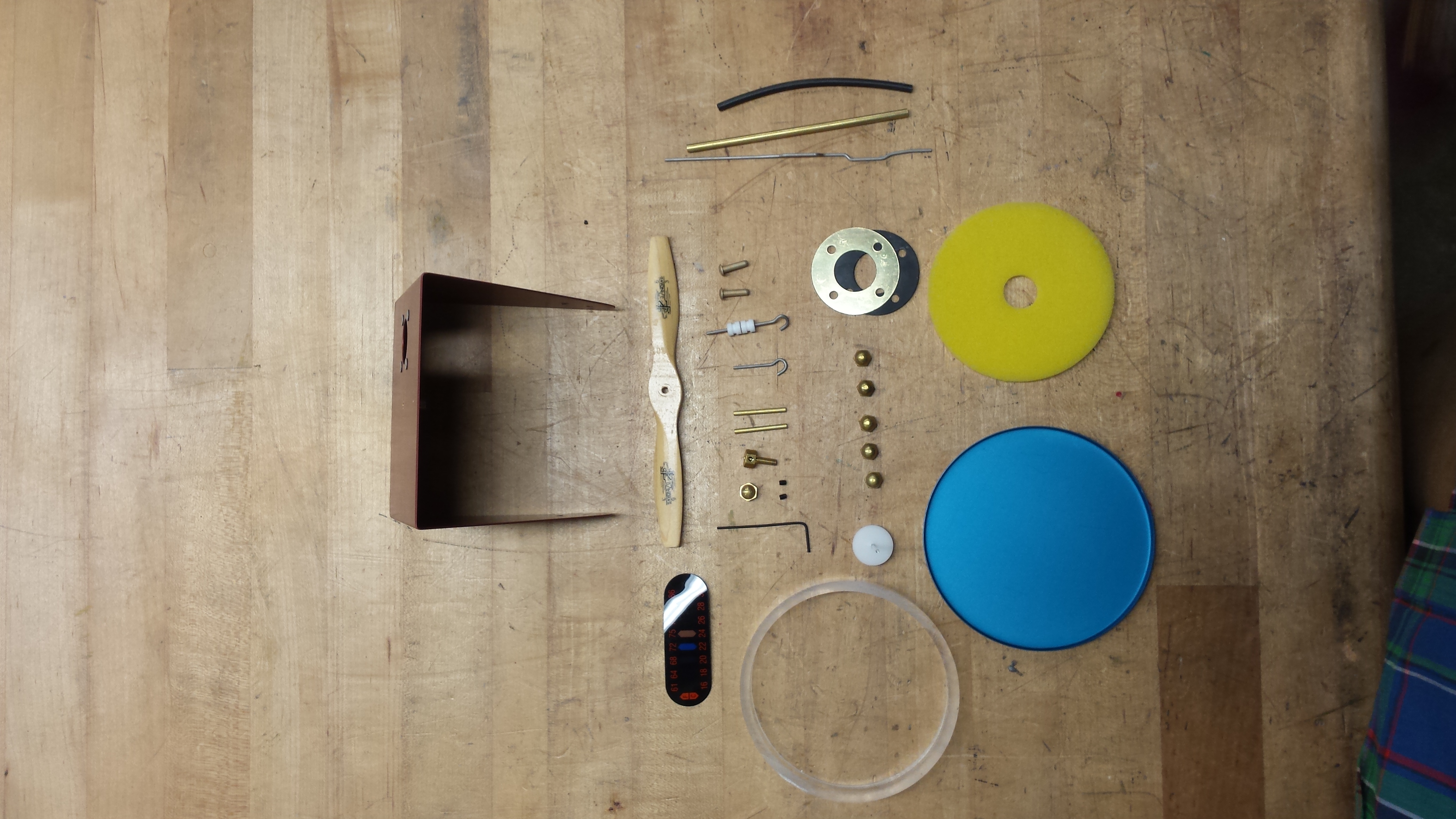Project Description
For our project we investigated properties of the Stirling Engine. The Stirling Engine was first invented in 1816 by the Reverend Doctor Robert Stirling as an alternative to the steam engine. It is a closed-cycle regenerative heat engine that can take thermal energy and convert it into mechanical energy.
We built two devices to explore the Carnot cycle, a thermodynamic concept which dictates the function of the Stirling engine. Our first engine was modified so that it was able to use different gases in its closed chamber; this engine was used to test the efficiency of helium versus air as the working gas of the engine. We observed that using helium in our engine caused the engine’s fan blade to spin approximately 50% faster than when air was the working gas.
The Carnot cycle also works in reverse by inputting mechanical energy to get thermal energy out. This reversal inspired our Stirling refrigerator. To do this we drove a Stirling engine with a small motor to input mechanical energy into our engine, and we measured a temperature differential output which depended on the direction of the motor’s rotation.




